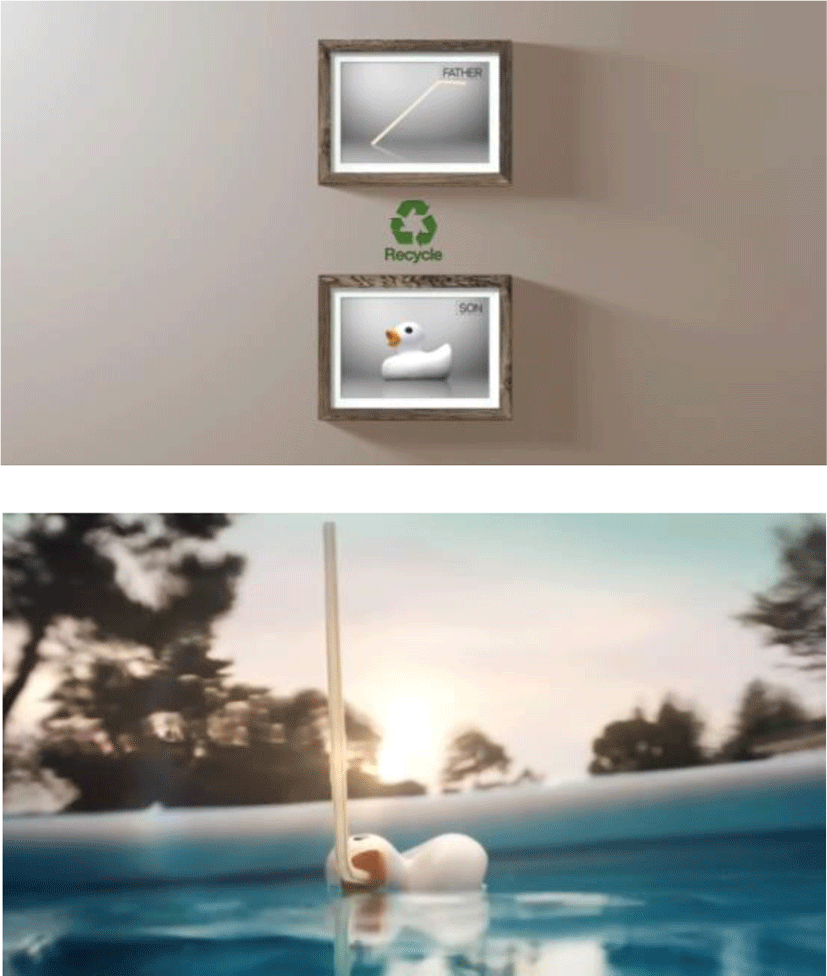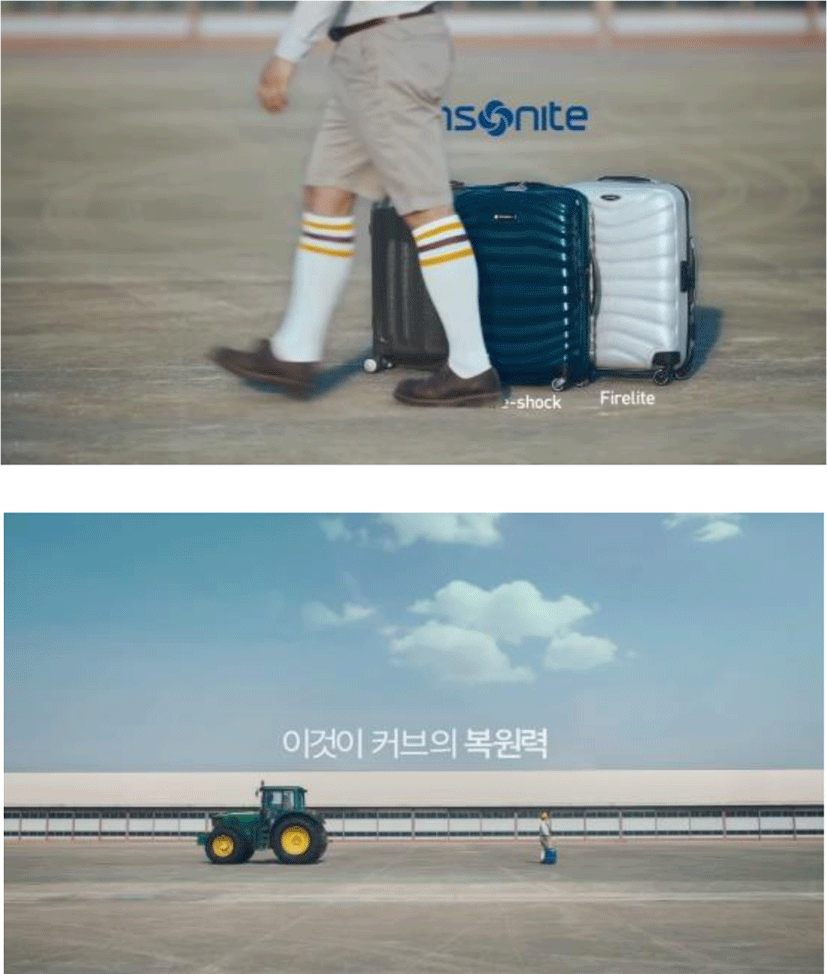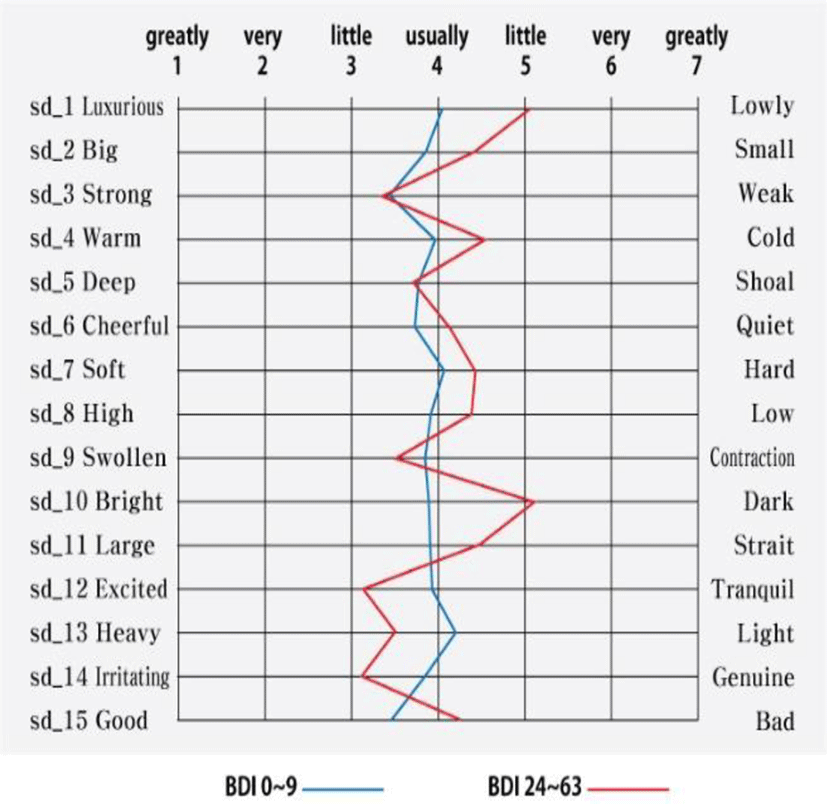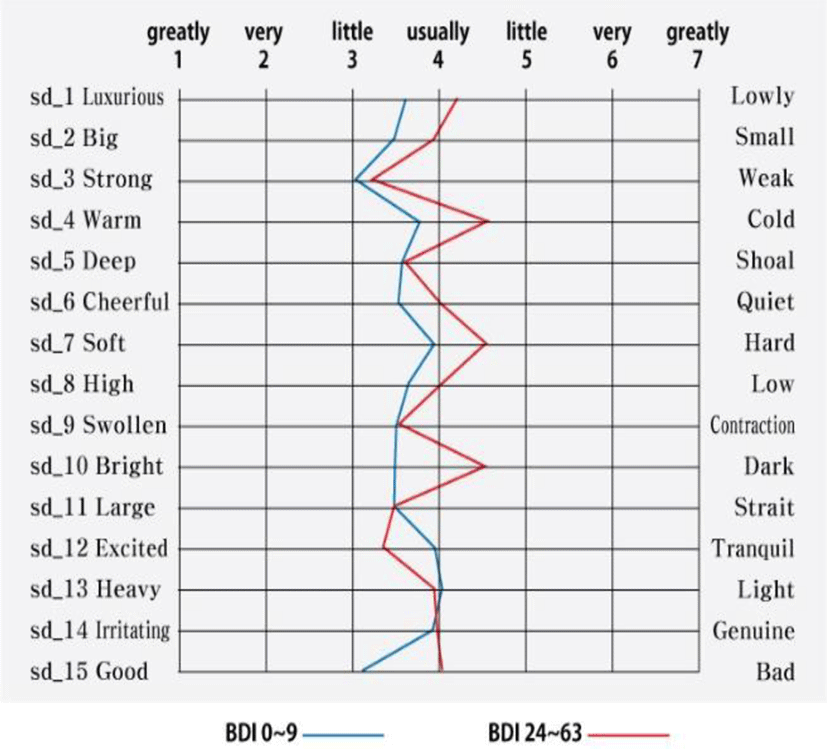I. INTRODUCTION
Among various types of information acquired through vision such as objects' forms, sizes and shapes, the broad spectrum of colors creates images in combination with all the above factors. A study reported that a color is a very important element that is absorbed to human body through eyes, respiratory organs and skin affecting health, and functions in inner mental and emotions adjusting the mood and soul of humans. It was already scientifically proven that colors are very intensive messages that convey intuitive meanings and feelings and affect the human's emotion system. Since the powerful ability of colors affects human's emotions and physical conditions, the color plan of video contents that convey all types of information through vision and auditory sense is very essential.
In human’s emotions, the condition of mood can change either positively or negatively through the change of environment and certain stimulations. People might try to change their emotions into positive ones in their own ways. In that video contents are provided as unilateral and direct stimulations without filtering to acceptors through broadcasting and other media, it is necessary to establish color plans that are closely related to emotions considering the social and cultural responsibilities.
The purpose of this study is to produce video contents by applying the result colors and emotions that mentally and emotionally healthy people feel, to help relief of depression scale and treatment of depression, to prevent depression by offering visual comfort to acceptors with normal depression scale, and to provide a basic resource for production of video contents and color plans of industrial fields.
II. RESEARCH METHOD
Regarding research methods, we had those who have the normal sense of color do self-checking with BDI (Beck Depression Inventory), which is a self-report type of depression scale invented by an American psychiatrist Aron Beck in 1961 and widely used in the world, showed them the black and white version of grand prix winners works in Korea AD Awards of 2015 and 2016, and then asked them to mark the colors that they felt. The presented colors were total 13 colors including 10 basic colors of Munsell color system with exclusion of value and chroma among three attributes of color (hue, value, chroma) along with BL-N0W-N11 and N4 for generalization and simplification of this experiment. To find out the emotions felt by watching the advertisements, we used the SD method, a psychological evaluation method presented by an American psychologist Osgood. The targets of research were total 409 people including members of Daegu Hana Church from teenagers to the elderly in their 70s, and students and teachers of Dongju Girls’ High School in Busan.


III. THE RESULT AND ANALYSIS
We could obtain 409 valid samples including 285 members of BDI 0~9 group(not depressed), 71 of 10~15 group(slightly depressed), 34 of 16~23(intermediately depressed) and 19 of 24~63(severely depressed). This study is to find out the differences among each group, and the gender and age are not included to classification conditions for analysis
In 280 of BDI 0~9 group, 58 people (20.71%) said yellow and 36(12.86%) said blue. In 70 of BDI 10~15 group, 12 people (17.14%) said grey and 11(15.71%) said blue. In 34 of BDI 16~23 group, 8 people (23.53%) said black and 6(17.65%) said blue. In 19 of BDI 24~63 group, 4 people (21.05%) said grey and blue respectively and 2 people (10.53%) said red, yellow red, blue green and black respectively. The color yellow was selected by the most people including 58 people (20.71%) in 0~9 group as at 24~63 group. In addition, while no one chose blue in 24~63 group, blue was chosen by the second most people in the rest 3 groups. Especially the colors chosen by the second most people in 24~63 group are red, yellow red, yellow blue and black, which is noticeable in that different colors are chosen rather than one color.
In 279 of BDI 0~9 group, 32 people (11.47%) said grey and 30(10.75%) said blue. In 70 of BDI 10~15 group, 13(18.57%) said grey, and 9 people (12.86%) said blue and yellow red respectively. In 34 of BDI 16~23 group, 6(17.65%) said white, and 4(11.76%) said purple and purple blue respectively. In 19 of BDI 24~63, 3(15.79%) said yellow, and 2(10.53%) said yellow green, purple blue, white and grey respectively. What is interesting is that the second most people chose yellow green, purple blue, white and grey in BDI 24~63 group.
The statistical result of overall color choice showed that each group chose different colors. For Korea AD Awards of 2015, yellow is the color chosen by 58(20.71%), which is the most people, in BDI 0~9 group, but in BDI 24~63 group 4 people (21.05%), which is the most people, chose yellow and other 4 people also chose grey, which shows the difference between the two groups. In BDI 24~63 group, no one chose blue, but in the rest 3 groups, blue was chosen by the second most people. For Korea AD Awards of 2016, 3 people (15.79%) of BDI 24~63 group chose yellow, but in BDI 0~9 group, the most people chose grey. In advertisements of both years, the color chosen by the most people in BID 24~63 groups was red, yellow red, blue green, black, yellow green, purple blue, white and grey, which means different colors are distributed by around 10%.

Overall, there was statistically significant difference in ‘elegant - vulgar, big-small, cheerful-quiet, high-low, bright-dark, wide-narrow, exciting-calm, good-bad’.
With normal score (4 points) standard, the difference between BDI 0~9 group and 24~63 group appeared in ‘big-small, warm-cold, cheerful-quiet, high-low, heavy-light, good-bad.
In other words, the emotion words chosen by those who are not depressed were ‘big, warm, cheerful, high, heavy, good’, and those who are depressed were ‘small, cold, quiet, low, light, bad’, which are opposite, in Korea AD Awards of 2015, showing the difference between the two groups.
| Korea AD Awards of 2015 | BDI 0~9 State with no depression | BDI 24~63 State with serious depression |
|---|---|---|
| SD Emotion Adjectives | Big | Small |
| Warm | Cold | |
| Cheerful | Quiet | |
| High | Low | |
| Heavy | Light | |
| Good | Bad |

Overall, there was statistically significant difference in ‘elegant – vulgar, big-small, warm-cold, soft-hard, high-low, bright-dark and good-bad’.
With normal score(4 points) standard, the difference between BDI 0~9 group and 24~63 group appeared in ‘warm-cold, soft-hard, bright-dark, heavy-light and good-bad.
In other words, the emotion words chosen by those who are not depressed were ‘warm, soft, bright, light and good’, and those who are depressed were ‘cold, hard, dark, heavy and bad’, which are opposite, in Korea AD Awards of 2015, showing the difference between the two groups.
| Korea AD Awards of 2016 | BDI 0~9 State with no depression | BDI 24~63 State with serious depression |
|---|---|---|
| SD Emotion Adjectives | Big | Small |
| Warm | Cold | |
| Soft | Hard | |
| Bright | Dark | |
| Light | Heavy | |
| Good | Bad |
IV. CONCLUSION
This study researched and analyzed colors and emotions felt by those with normal depression scale and those who were diagnosed of depression on TV commercials that contain all the elements of images including story and colors in short video images among video contents. The purpose of this study was to provide a basic resource that can be applied to production of contents, so that it can help acceptors of video contents to change their mood and to relieve depression scale.
The vibration of colors is absorbed into body, restores vitality of all the tissues in the body and stimulates mental recovery, making emotions harmonized. Therefore, if colors are properly chosen and used, positive energy can be created in the body.
The feeling of depression is developed into a disease depression, which eventually can cause the extreme result of suicide. It can also cause social problems such as violent crimes. The feeling of depression is a normal emotion that humans feel, but if it is neglected, it can be developed into a disease causing serious problems. Therefore, it is necessary to try to switch the feeling of depression into the feelings of joy and happiness in our daily lives. That’s why the role of video contents, which are in the center of our culture, is very important. In summary, if the colors and emotions felt by mentally healthy people are used for production of video contents, depression patients can relieve their depression scale and can be treated, and normal acceptors of video contents can be provided with visual comfort, so they can prevent depression. In addition, this study is expected to be used as an important basic resource for color plans of industrial fields as well as production of video contents.
